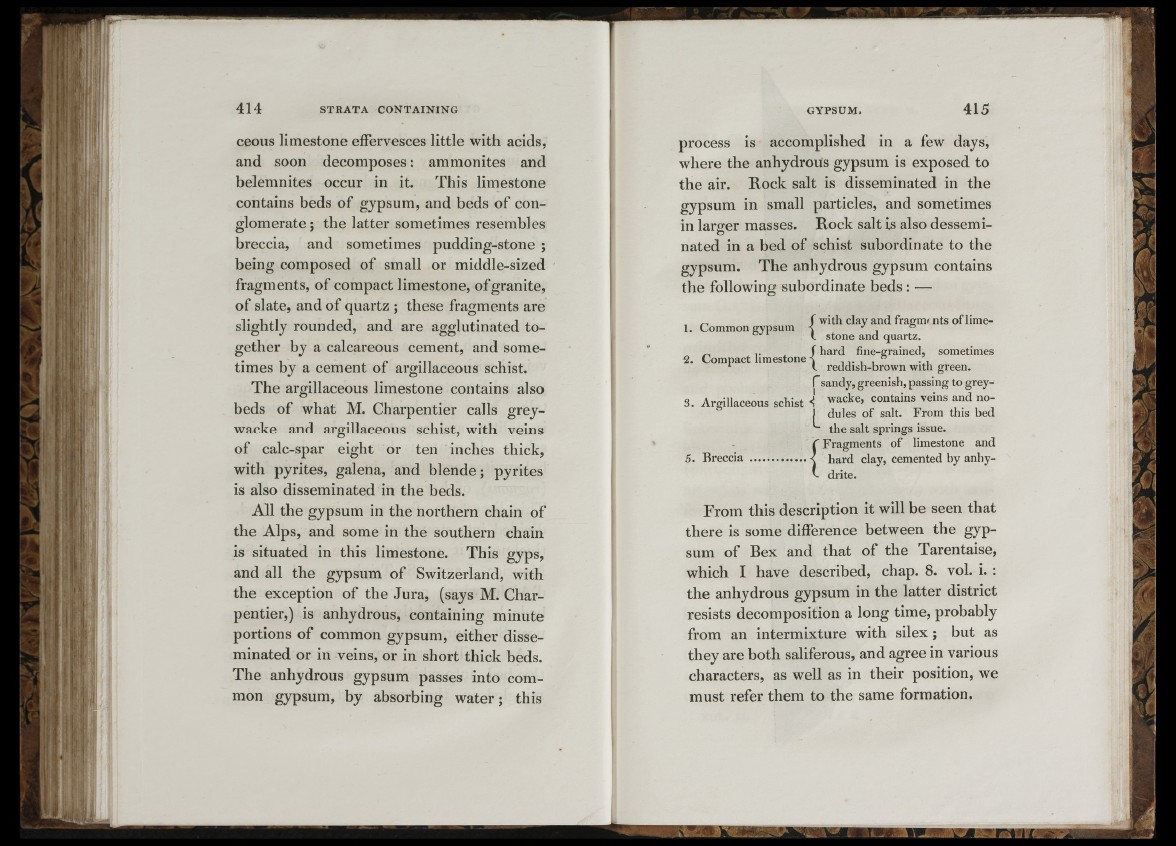
ceous limestone effervesces little with acids,
and soon decomposes : ammonites and
belemnites occur in it. This limestone
contains beds of gypsum, and beds of conglomerate
; the latter sometimes resembles
breccia, and sometimes pudding-stone ;
being composed of small or middle-sized
fragments, of compact limestone, ofgranite,
of slate, and of quartz ; these fragments are
slightly rounded, and are agglutinated together
by a calcareous cement, and sometimes
by a cement of argillaceous schist.
The argillaceous limestone contains also
beds of what M. Charpentier calls grey-
wacke and argillaceous schist, with veins
of calc-spar eight or ten inches thick,
with pyrites, galena, and blende; pyrites
is also disseminated in the beds.
All the gypsum in the northern chain of
the Alps, and some in the southern chain
is situated in this limestone. This gyps,
and all the gypsum of Switzerland, with
the exception of the Jura, (says M. Charpentier,)
is anhydrous, containing minute
portions of common gypsum, either disseminated
or in veins, or in short thick beds.
The anhydrous gypsum passes into common
gypsum, by absorbing water; this
process is accomplished in a few days,
where the anhydrous gypsum is exposed to
the air. Rock salt is disseminated in the
gypsum in small particles, and sometimes
in larger masses. Rock salt is also dessemi-
nated in a bed of schist subordinate to the
gypsum. The anhydrous gypsum contains
the following subordinate beds : —
, „ r with 1. Common sypsum < clay a,nd fragmr nts of limet
stone and quartz.
2. C^ ompact Tli mestone J1 hard fi in, e-grained-,’ i sometimes ^ t reddish-brown with green.
rsandy, greenish, passing to grey-
3. Argillaceous schist H contains veins and no-
I dules of salt. From this bed
{the salt springs issue. Fragments of limestone and
hard clay, cemented by anhydrite.
From this description it will be seen that
there is some difference between the gypsum
of Bex and that of the Tarentaise,
which I have described, chap. 8. vol. i. :
the anhydrous gypsum in the latter district
resists decomposition a long time, probably
from an intermixture "with s ile x ; but as
they are both saliferous, and agree in various
characters, as well as in their position, we
must refer them to the same formation.